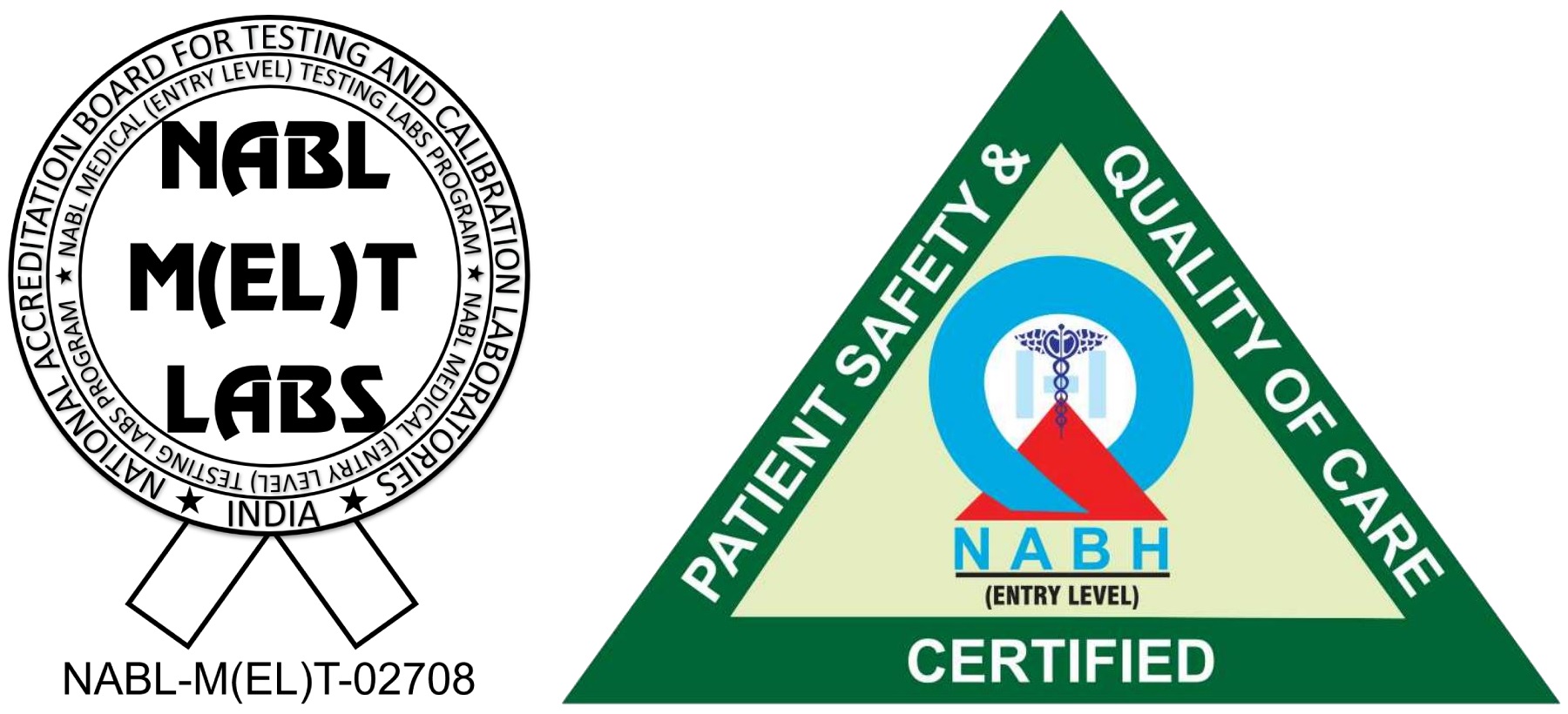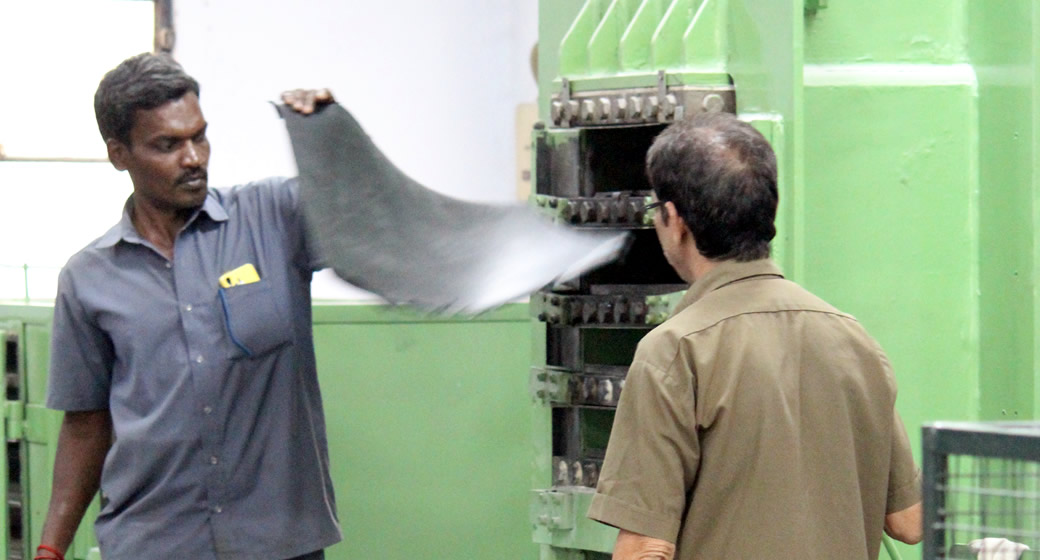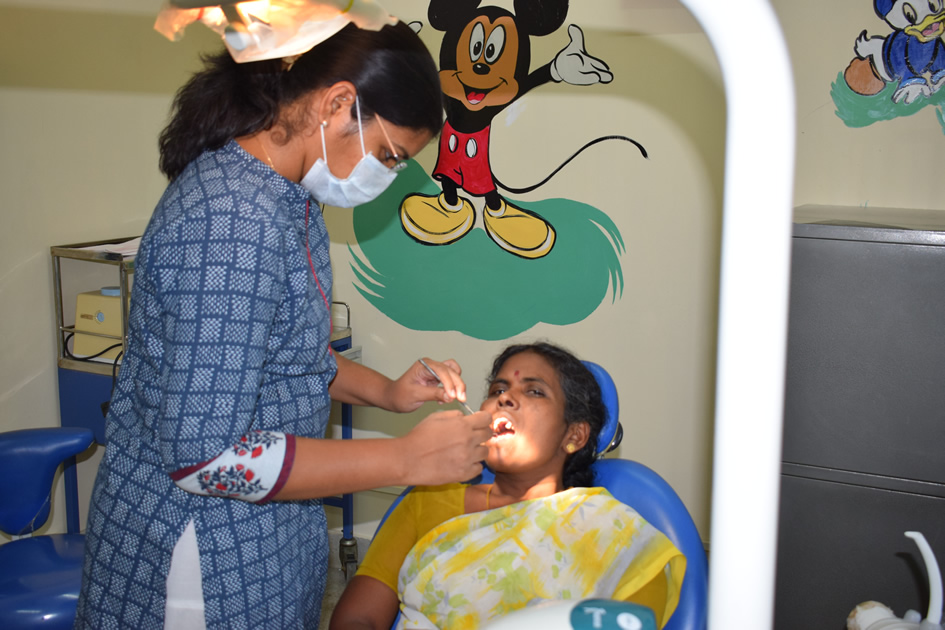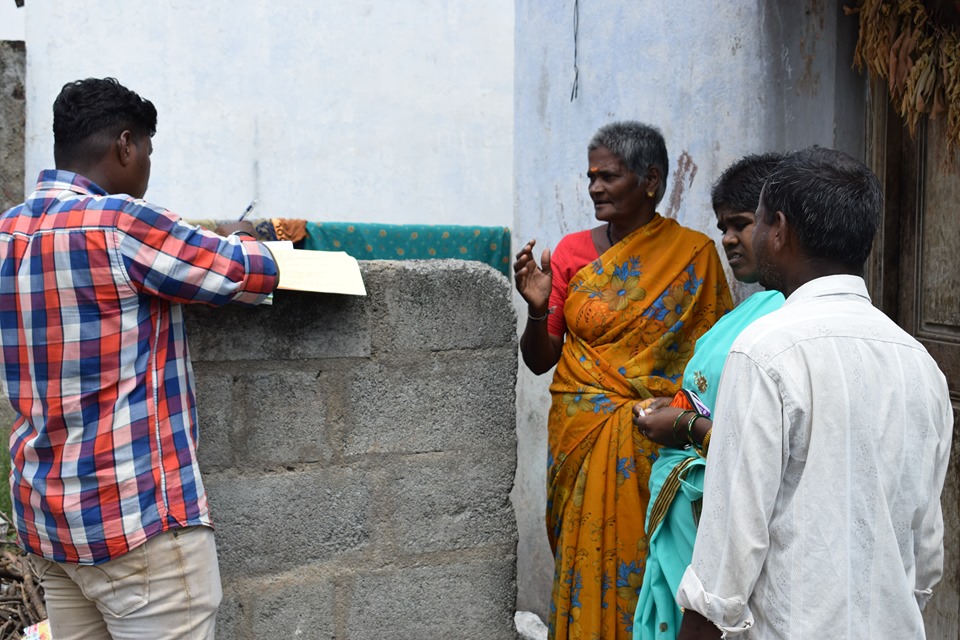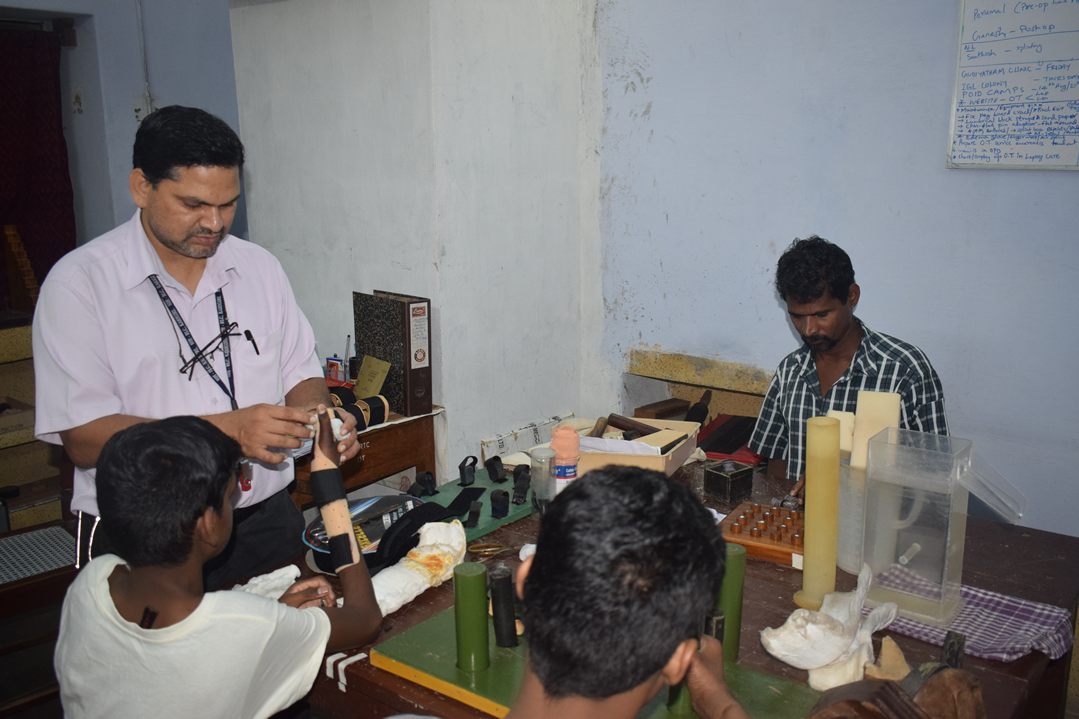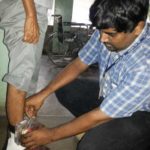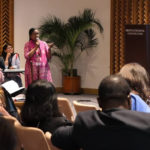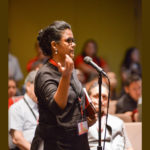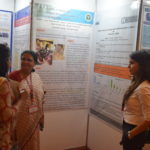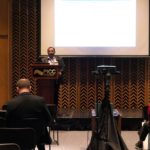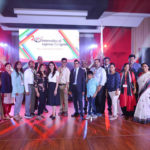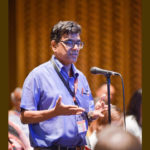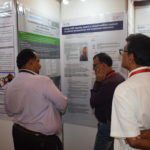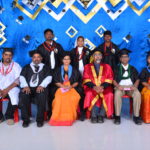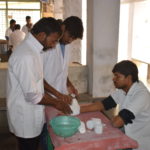HISTORY
The immense need for eye care in leprosy patients was felt by the legendary Dr. Margaret Brand, who took special training for the same, and ophthalmology work was started in the late 1950s.
PATIENT CARE
The patient crowd who seek our services come from a wide and varied range of social and economic strata. Regardless of this, we make sure that each of our patient gets quality care and personal attention. Wholesome spiritual and physical healing to all, is our utmost desire.
ACTIVITIES
We cater to a wide array of patients with a range of ophthalmic problems. The common conditions we come across are refractive errors, cataracts, glaucoma, diabetic retinopathy, uveitis, corneal ulcers etc.
OUTREACH
We have regular outreach camps during the week in which deserving patients with cataract are identified and brought to the hospital for free cataract surgery under DBCS scheme. We also screen for refractive errors, diabetic retinopathies and glaucoma during the camps and are referred to the base hospital for detailed evaluation and treatment. School screenings, health education and teacher’s training are also part of our outreach programs.
LASERS
- Retinal photocoagulation (Zeiss Visual 532)
- Laser trabeculoplasty
- Laser Iridotomy (Zeiss Visulas YAG II plus)
- YAG capslotomy (Zeiss Visulas YAG II plus)
ADDITIONAL FACILITIES
- Optical shops
- Contact lens fitting
SPECIALTY CLINICS
- Retina
- Glaucoma
- Cornea
- Contact lens
- LVA
OUR NEW SERVICES
The ophthalmology department has started on-call OCT services, from the month of August 2023, for diagnosis, prognosis and follow up of retinal diseases like ARMD, Diabetic retinopathy, CSR, HCQ toxicity, Glaucoma etc.
We will be soon starting AntiVEGF intravitreal injections for treatment of various vaso-proliferative retinal conditions also.
THE FAITHFUL COMPANION
One day when the outreach eye camp team returned to the hospital with the usual crowd of patients screened for cataract surgery, among them were three people, two old ladies and an old man, who had something peculiar in common. They went, where ever they went, in a line, like the three blind mice.. and blind they were… with their bilaterally mature cataracts!! And they all had a sturdy wooden rod in their hands to lead their way.
They went through the entire pre-operative procedures and counselling clutching on to their rods, as if it held their lives. When one of the staff jokingly asked the eldest lady if he can have the rod for himself, she got offended and said instantly , “ How do you expect me to move around without this? This is my faithful companion.” Then suddenly feeling sorry for denying his request, she innocently continued.. “ But if you really need it I can arrange for one, the next time I come.” The three underwent uneventful cataract surgeries the next day. They were very happy with their regained vision and were gleaming with joy. When the threesome came for a follow up after one week, they were still with their rods, though their vision was perfect. When asked by the same staff, why she needed the rods still, the lady promptly answered “ This has carried me through the high and low, tough and rough lands when I was blind. How can I just leave it, now that I’ve got my vison back?” It was an eye opener for all those who forget the good done by someone in times of trouble, after they tide over the trial times. The old lady expressed her thanks and went by, only to return in a short while and clasping the ‘requisitoner’s’ hands and handing over her rod she said, “ I think I actually don’t need it anymore. You can keep it”,…… clueless about why the person blushed, while the rest of the staff who watched them burst into a laughter.
THE NOTORIOUS SIGHT STEALER
Mrs. Mangaiammal , 60 yrs old, presented to us with complaints of intractable pain, watering and photophobia since 3 months of her right eye cataract surgery which was done elsewhere. Despite various visits to the concerned hospital her symptoms persisted and she came to us desperate for a second opinion. She had no known systemic illness. On examination at our clinic, her vision was PL, with PR inaccurate in the right eye and 6/18 in the left eye. Right eye cornea was hazy due to edema and had an irregular AC which was very shallow with a pressure of 50mmHg. She was pseudophakic with a total glaucomatous atrophy . Left eye had an immature cataract, with normal IOP and fundus findings.
A clinical diagnosis of postop malignant glaucoma was made. This is a type of glaucoma notorious for it’s resistance to all kinds of treatment and the patient ends up with a painful blind eye. She was started on antiglaucoma medications. A Nd-Yag laser hyaloidotomy was attempted but didn’t work well. She was planned for a pars plana vitrectomy with AC reformation which was done. Patient’s AC was deeper and her IOP was coming down during the initial weeks of surgery. As both the patient and the doctors were feeling good about being able to tackle one of the worst known types of glaucoma, the pressure shooted up again despite the maximum medical therapy. A cyclodestructive procedure was the last resort left, for which the patient was willing as a painless eye was her only desire by then. As planned a cyclocryoablation of 180º was done. To our and the patient’s relief the IOP crashed down to normal levels, very soon after the procedure. The patient is very grateful and happy today, 3 months after the procedure, that she can wake up everyday without the gnawing pain in her blind eye. We thank God for helping us make the right decisions at the right time and enabling us to help the patient
Evolution of vision reducing cataract in skin smear positive lepromatous patients: does it have an inflammatory basis?Daniel E, Sundar Rao PS. Br J Ophthalmol. 2007 Aug;91(8):1011-3.
Iris atrophy in patients with newly diagnosed multibacillary leprosy: at diagnosis, during and after completion of multidrug treatment.Daniel E, Sundar Rao PS, Ffytche TJ, Chacko S, Prasanth HR, Courtright P. Br J Ophthalmol. 2007 Aug;91(8):1019-22.
Recurrent nodular scleritis preceding an adult TINU syndrome.Daniel E, Gangaputra S, Kempen JH, Jabs DA. Ocul Immunol Inflamm. 2006 Aug;14(4):239-40.
Quantitative measurement of sensory impairment in referral centers. Premkumar R, Rajan P, Daniel E. Int J Lepr Other Mycobact Dis. 2005 Sep;73(3):219-22.
Anesthesia of face uncovered by histopathology.Daniel E, Ebenezer G. Int J Lepr Other Mycobact Dis. 2005 Mar;73(1):22-4.
Impaired contrast sensitivity among leprosy patients with normal visual acuity.
Daniel E, Thiripurasundary, Appavoo R, Chacko S, Ragupathy A, Raju R. Lepr Rev. 2005 Mar;76(1):55-64.
Mycobacterium leprae infection and serum lactoferrin levels. Muruganand D, Daniel E, Ebenezer GJ, Rabboni SE, Segar P, Job CK. Lepr Rev. 2004 Sep;75(3):282-8.
Elevated free tear lactoferrin levels in leprosy are associated with Type 2 reactions. Daniel E, Duriasamy M, Ebenezer GJ, Shobhana, Job CK. Indian J Ophthalmol. 2004 Mar;52(1):51-6.
Bilateral Bipolaris keratomycosis in a borderline lepromatous patient. Gopalakrishnan K, Daniel E, Jacob R, Ebenezer G, Mathews M.Int J Lepr Other Mycobact Dis. 2003 Mar;71(1):14-7.
Ocular complications in incident relapsed borderline lepromatous and lepromatous leprosy patients in south India. Daniel E, Koshy S, Joseph GA, Rao PS. Indian J Ophthalmol. 2003 Jun;51(2):155-9.
Knowledge and practice of eye-care among leprosy patients. Yowan P, Danneman K, Koshy S, Richard J, Daniel E.Indian J Lepr. 2002 Apr-Jun;74(2):129-35.
Intraocular lens implantation in leprosy. Daniel E, Koshy S. Int J Lepr Other Mycobact Dis. 2002 Mar;70(1):9-15.
Biporalis keratomycosis in a leprosy patient: a case report. Koshy S, Daniel E. Lepr Rev. 2002 Mar;73(1):76-8.
Our department is running a BSc. Optometry course by the M.G.R university since 2011.There are 15 students in each batch every year. The admission is based on an Allied health Sciences entrance examination conducted by the institute every June, subject to the university rules and regulations.
We make sure that our optometry students get the best out of their training by the end of their course and ensure that they attend most of the CMEs and workshops in the state and take part in inter collegiate quiz and other related competitions.
We also have regular nursing, allied health students and health workers, medical officers and dermatologists visiting our institution for leprosy exposure , who are being trained by us regarding the ocular manifestations and management of leprosy.
We conduct camps under the DBCS scheme by the Government.
PRESENT STAFF INFORMATION
- Ophthalmologists
- Dr. Shirley chacko. Dip.In Ophthal
- Dr. Minu Susan Prakash. MS (Ophthalmology)
- Dr. Priya Thomas Mathew. MBBS,DO,DNB
- Optometrists / Tutors
- Mrs. Anupriya
- Ms. Monisha
- Mr. Mugilan
- Optician/ Optometrist
- Mr. Sathish Kumar
- Mr.Joshua
- Camp Organiser
- Mr. Ruben franklin
- Field Workers
- Mrs. Nanda kumari
- Mrs. Bharathi
- Mr. Raju
- Secretary
- Mrs. Sharmila
- Attender
- Mr. Kumar
- Nurses
- Mrs. Sathya
- Mrs. Maheswari
RELATED POSTS
International Leprosy Congress (ILC) 2022
International Leprosy Congress 2019
Multicentric trial to study the effect of Active
The 2nd “Belt and Road” International Forum for Leprosy Precision Treatment and Prevention
Design Customized Offloading Devices to Promote Healing of Plantar Ulcers
Tactile Sensory Feedback System to Predict and Prevent Peak Plantar Pressures
RECENT POSTS
RECENT POSTS
RECENT WORKS
CONTACT INFO
The Schieffelin Institute of Health – Research & Leprosy Centre (SIH-R & LC),
Karigiri, (via Katpadi) – 632106, Vellore District,
Tamil Nadu, India.
Phone: 0416-2274-223
Mobile: 9442274224
Email: directorate@karigiri.org
Web: www.leprosyhealth.org

